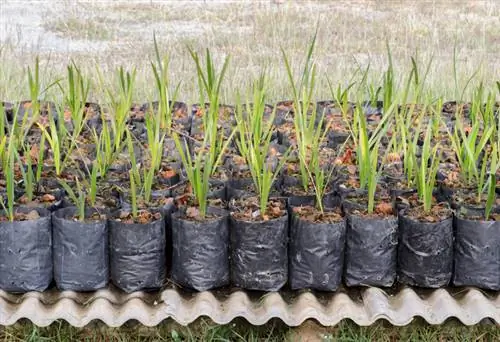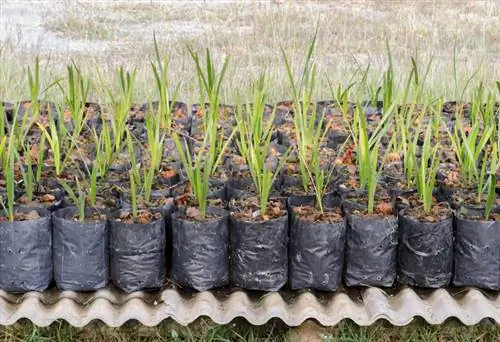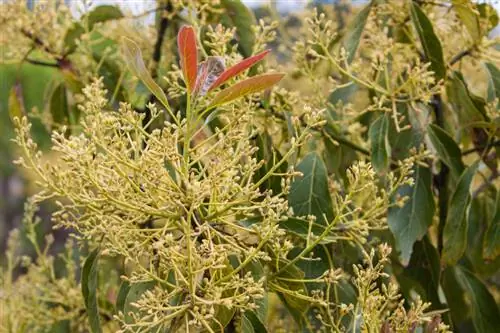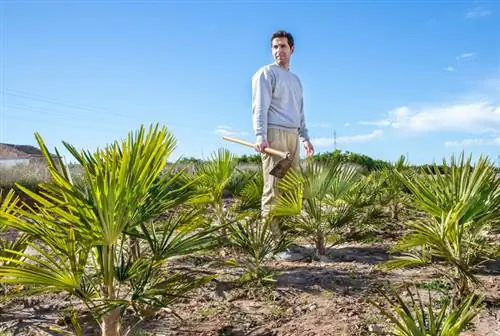- Author admin [email protected].
- Public 2023-12-16 16:46.
- Last modified 2025-06-01 06:02.
Date palms are not only easy to care for, they are actually quite easy to grow yourself. However, you need some patience and sensitivity. How to Grow a New Date Palm from a Sapling or from Seed.

How can I grow a date palm?
To grow a date palm, you can either use saplings that grow sideways from the ground in spring or seeds. Growing from saplings is faster, while growing from seeds can take several months.
What methods are there for propagating date palms?
Date palms can be propagated in two ways: via shoots or from seeds.
Growing from seeds is very time-consuming. It can take months until the seeds germinate and the first cotyledons appear.
Raising from saplings is a little quicker. However, this only works if the date palm produces lateral shoots in spring.
How to Grow a Date Palm from Saplings
To grow new date palms, you can cut saplings that grow sideways from the ground in spring. Never cut off the top of the date palm. This removes the vegetation point and the palm tree dies.
- Fill cultivation pots with soil
- Insert shoots and press soil down
- place in a bright, warm location
- Keep substrate moist but not wet
Place the pots with the cuttings in a location where it is as warm as possible. Temperatures around 25 degrees are ideal. It is good if the shoots are also warmed from below.
The fact that new roots have formed can be seen when new leaf buds appear. You only have to transplant the new date palms when the roots have already grown out of the drainage hole at the bottom.
Growing a date palm from seeds - this is how it works
The seeds are very hard-shelled and are placed in lukewarm water for at least 24 hours before sowing. Then sow it in pots (€8.00 on Amazon) that you have filled with potting soil.
Cover the seed with about a centimeter of soil. Keep the pot warm and bright but not sunny. Keep the soil moist, avoiding too much moisture.
After germination, wait until the new date palm is about ten centimeters high. Then plant them in a deep pot with palm soil.
Tip
Date palms can tolerate light frost temperatures for a short time. In a protected location you can even overwinter older specimens in the garden bed. But it shouldn't get colder than -6 degrees at the location.






